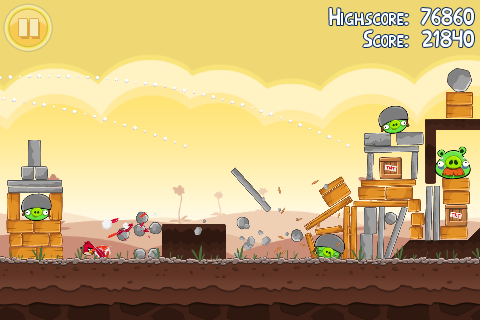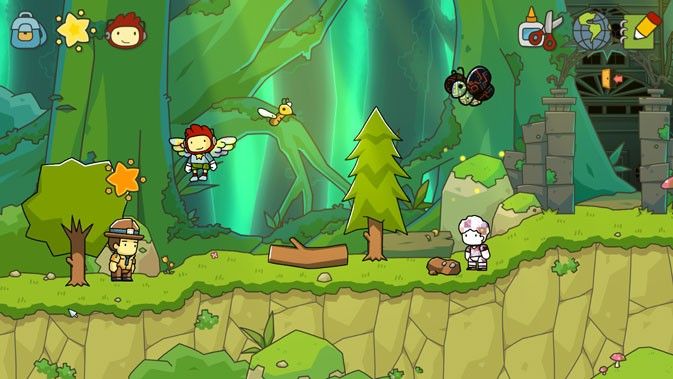Introduction
If you have a question like “How to Create 2D Graphics for Games?” then this article is for you. 2D game graphics are visuals used in video games that exist on a two-dimensional plane. Unlike 3D graphics, which have depth and perspective, 2D graphics are flat and lack depth perception.
Importance of Quality 2D Graphics in Games
Quality 2D graphics play a crucial role in enhancing the visual appeal and overall gaming experience. They help convey the game’s narrative, evoke emotions, and immerse players in captivating virtual worlds.
Overview of Popular 2D Game Art Styles
- Monochromatic: Uses a single color or shades of a single color for the entire artwork.
- Pixel Art: Utilizes small, square pixels to create intricate designs and characters.
- Vector Art: Relies on mathematical equations to render smooth, scalable graphics.
- Cutout Art: Features flat, stylized artwork with visible cutout edges.
- Doodle Art: Characterized by hand-drawn, whimsical sketches and illustrations.
Different 2D Game Art Styles
Monochromatic Art
Monochromatic art employs a single color palette to create visually striking compositions. Games like “Limbo” and “Badland” showcase the atmospheric and minimalist appeal of monochromatic art.
Pixel Art
Pixel art utilizes tiny square pixels to form detailed images and animations. Popularized by games like “Minecraft” and “Stardew Valley” pixel art exudes retro charm and nostalgia.
:max_bytes(150000):strip_icc()/3-eJrCT0p-56a61d263df78cf7728b6b00-5c86c47dc9e77c0001422fa0.jpg)
Vector Art
Vector art comprises geometric shapes and lines that can be resized without losing quality. Games such as “Angry Birds” and “Monument Valley” leverage vector graphics for their clean and scalable visuals.

Cutout Art
Cutout art features flat, paper-like characters and environments with distinct outlines. Titles like “Paper Mario” and “Cuphead” showcase the vibrant and stylized nature of cutout art.

Doodle Art
Doodle art embraces a free-form and whimsical drawing style, often resembling sketches in a notebook. Games like “Doodle Jump” and “Scribblenauts” exhibit the playful and imaginative essence of doodle art.

Step-by-Step Guide to Creating 2D Game Graphics
- Preparing for Artwork Creation: Before diving into artwork creation, it’s essential to understand the game’s requirements and the preferences of the target audience. Selecting a suitable art style based on the game’s theme and genre is paramount for cohesive visual storytelling.
- Conceptualizing and Sketching: Start by developing concept art for characters, environments, and props through iterative sketching and feedback loops. This process allows for the exploration of various design ideas and ensures alignment with the game’s artistic vision.
- Digital Art Creation: Utilize tools and software tailored for 2D game artwork, such as Adobe Photoshop, Procreate, or Aseprite. Create characters, backgrounds, and objects with attention to detail and consistency in art style.
- Optimization and Integration: Optimize artwork for performance by adhering to file size limitations and resolution requirements. Ensure seamless integration of art assets into game engines, maintaining compatibility across different platforms and devices.
Common Mistakes to Avoid in 2D Game Graphics
- Lack of Understanding of Target Audience: Failing to grasp the preferences and expectations of the target audience can result in mismatched visuals that fail to resonate with players.
- Inconsistency in Art Style: Inconsistencies in art style can disrupt immersion and cohesion within the game world, detracting from the overall player experience.
- Inaccuracy in Artwork: Artwork that lacks attention to detail or realism may fail to convey the intended aesthetic or narrative, diminishing its impact on players.
- Poor Optimization for Performance: Overly complex or unoptimized artwork can lead to performance issues such as lag or stuttering, negatively impacting gameplay.
- Rushing Artwork Creation Process: Rushing the artwork creation process can result in subpar quality and missed opportunities for creativity and refinement.
Hiring 2D Artists for Creating 2D Graphics
Options for Hiring 2D Artists
- Freelance Platforms: Use platforms like Upwork or Fiverr for project-based collaborations.
- Outsourcing Companies: Partner with firms specializing in game development services.
- Game Industry Events: Attend conferences to network with professionals.
- Social Media: Engage with artists on platforms like LinkedIn or Twitter.
Criteria for Selecting 2D Artists
- Portfolio: Look for diversity, style consistency, and relevance to your project.
- Experience: Prioritize artists with gaming industry experience or similar projects.
- Professionalism: Consider communication skills, responsiveness, and meeting deadlines.
- Adherence to Deadlines: Ensure artists can deliver on time.
Conclusion
In summary, mastering the creation of quality 2D graphics is crucial for enhancing the visual appeal and immersive experience of video games. By understanding different art styles, avoiding common pitfalls, and selecting the right talent, developers can bring their game worlds to life. Whether you’re a seasoned artist or just starting out, continuous learning and experimentation are key to creating captivating 2D game graphics that resonate with players. Join our community to stay updated and connected, and let’s continue to elevate the game industry together.
FAQs
1. What software is best for creating 2D graphics for games?
Popular software options for creating 2D graphics for games include Adobe Photoshop, GIMP, and Aseprite. Choose the software that best fits your workflow and skill level.
2. Do I need artistic talent to create 2D graphics for games?
While artistic talent certainly helps, anyone can learn to create 2D graphics with practice and dedication. Start with the basics and experiment with different techniques to develop your skills.
3. Can I use pre-made assets for my game?
Yes, you can use pre-made assets for your game, but be mindful of licensing restrictions and ensure that the assets fit the style and theme of your game.
4. How can I learn more about creating 2D graphics for games?
There are many online resources available for learning about creating 2D graphics for games, including tutorials, forums, and online courses. Start by exploring beginner-friendly tutorials and gradually expand your skills.
5. What are some common mistakes to avoid when creating 2D graphics for games?
Common mistakes to avoid include using too many layers, overcomplicating designs, neglecting optimization, and ignoring feedback from playtesting. Keep your designs simple, optimize for performance, and iterate based on feedback from players.
Join Our Community
Stay connected with us and become a part of our vibrant community on social media:
Get In Touch
Have questions, suggestions, or feedback? We’d love to hear from you! Reach out to us through our contact page.
At Universe 2.0, we provide information, tutorials, guides, etc., to grow the game industry.
Visit us at: universe-2.com

